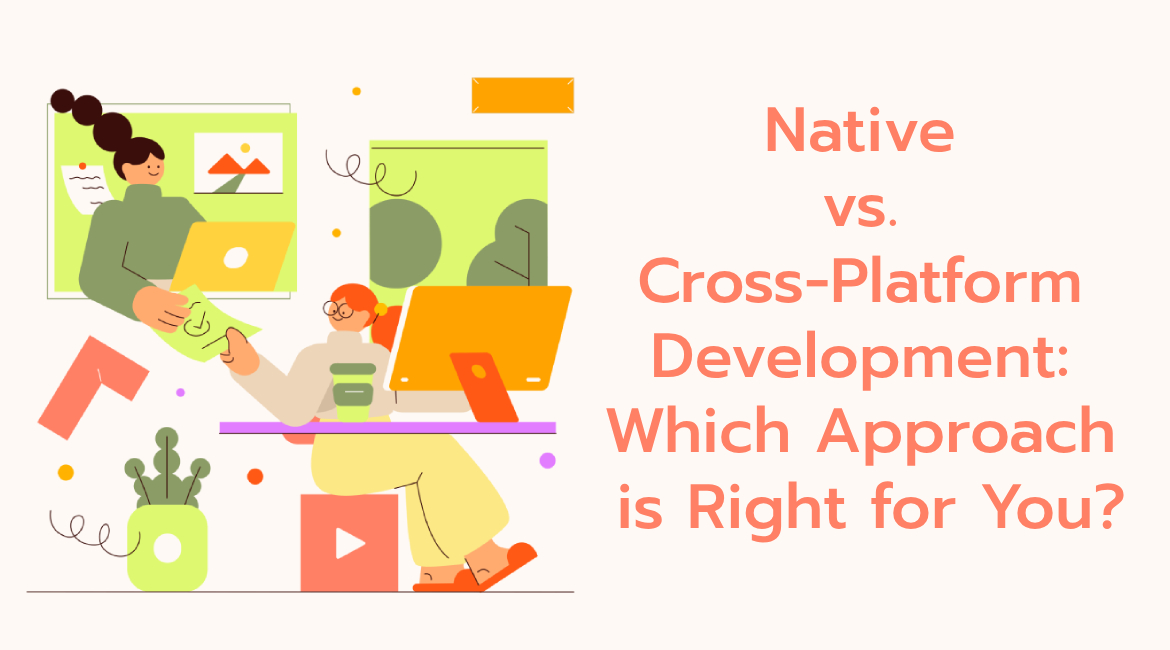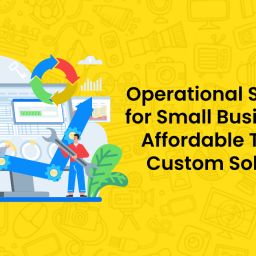Native vs. Cross-Platform Development: Which Approach is Right for You?
In today’s world, everyone has access to a mobile phone even if they don’t have a personal computer. People want everything at their fingertips, let it be opening a document or making a credit card payment. As a result, to make this process easier we have mobile apps for everything ranging from making international payments to virtual poker tables.
Businesses thrive on making their product available to the masses and mobile apps are the perfect way to do that, but the problem is not everyone has the same phone and the major difference in the phones used are their operating systems – Android and iOS.
Now to build mobile apps, you have to consider the OS of your user and tailor your app according to it. Here is where the concept of native app development and cross-platform development comes into play. Each method has its own advantages and disadvantages and, in this blog, we are going to delve into it.
software developer position.
What is Native App Development?
Native app development involves building apps specifically for a particular platform, such as Android or iOS. Developers use platform-specific programming languages and tools like:
Native app development is the process of building apps for specific platforms, be it Android or iOS. In this method, developers use languages, frameworks and tools specific to that platform. For example,
Android development: Java or Kotlin inside an IDE called Android Studio.
iOS development: Swift or Objective-C in Xcode.
Since this development is tailored to specific platforms, you can leverage all the functionality of that platform which may or may not be available in the other one.
Advantages of Native Development
Superior Performance
Native apps are extremely fast and highly responsive and adaptable to the mobile’s specifications. This makes them the preferred choice for apps which heavily utilize the hardware of the phone, like resource heavy video games and AI apps.Better User Experience (UX)
Native apps follow the UI/UX specifications set forth by the platform and the user hence they look and feel better than cross-platform apps.Full Access to Device Features
Native apps can very easily utilize sensors and external hardware of the mobile phones like cameras and NFC scanners.High Security
Native apps are more up to date with the security updates of the operating system and hence they becoming key when developing information sensitive mobile apps like payment applications and authentications apps.
Disadvantages of Native Development
Higher Costs
Native app development warrants two separate codebases – one for Android development and another for iOS development which almost doubles the cost.Longer Development Time
Developing and maintaining two different codebases is time consuming, especially while introducing new updates and bug fixes.
What is Cross-Platform App Development?
Cross-platform app development is the process of developing app which can work on multiple platforms but from one codebase. Developers use platform-specific programming languages and tools like:
React Native: It is a framework of JavaScript developed by Facebook.
Flutter: Google’s UI kit which is based on Dart.
Xamarin: C# based framework made by Microsoft.
This approach accelerates the development process, making it useful for people trying to publish their apps as soon as possible and also for people who are working with lower budgets.
Advantages of Cross-Platform Development
Cost-Effective
One single codebase for both platforms almost halves the development cost.Faster Development Cycle
With reusable code, bug fixing and updates become quicker.Broader Audience Reach
You might have noticed that some apps are only available on only one single platform, this method solves that problem and hence it reaches a broader audience.
Disadvantages of Cross-Platform Development
Performance Limitations
Complex and resource intensive apps are very buggy when they are developed as a cross platform mobile application.Limited Access to Platform-Specific Features
Some frameworks have some limitations which might result in reduced functionality.Compromised UX
The UX design becomes a bit more complicated since the app is expecting different reaction on different devices.
When to Choose Native Development
You are developing a game and you want the best possible look and feel of the app and also heavy hardware usage for the app to run.
You want to extensively use the hardware capabilities of the phone.
You have both the budget and time to invest on developing a mobile that works perfectly on both the platforms.
For example, you are building an app which lets users tweak some properties of the phone’s hardware. You might want to make an app just for android since iOS won’t permit such a backend.
When to Choose Cross-Platform Development
You are on a budget constraint and stakeholder expectations are an app on both platforms.
You are introducing an MVP (Minimum Viable Product) to test the waters and collect data.
Your app is pretty generic and doesn’t require any advanced functionality.
Kubernetes Administrator.
Conclusion
Staying updated with latest technology is absolutely crucial if you are business owner or you are planning to start your own company. Knowing about these emerging technologies can home in handy somewhere along the line where you can save your time and money by using these in your day-to-day like or work to make it easier.






